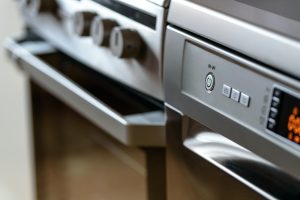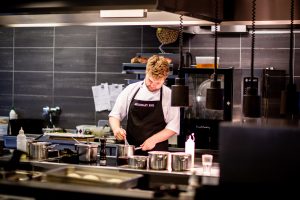How to choose an oven: we help you decide on the criteria – part 1 / 09.11.18
Recently we addressed the question of “How to choose a hob for your home”. However, a household hob is usually paired with an oven (unless the user has made a radical decision to give up the oven altogether). There are several main reasons why someone may prefer a separate oven to a combined solution (stand-alone hob): the ability to build the oven into the kitchen set, the ability to choose the most suitable surface/cabinet pair that best suits the needs of the chef, and finally the ability to choose the right design. So how do I choose an oven and what are the features of this appliance that should be taken into account in the first place? Let’s get to the bottom of this.

Gas or electricity
As with the hob, the first thing to determine is the type of oven. Namely, whether it will run on gas or electricity. It must be said that the choice in this case is not as obvious as in the case of the hob. A gas oven is likely to be cheaper to buy and almost certainly to use, but many people prefer to choose an electric oven even if there is a gas pipe in the apartment.
The fact is that electric ovens have more functionality than gas ones. For example, electric heating allows you to control the cooking temperature more precisely (a gas oven, for example, will not allow you to keep the temperature low for a long time). Some also believe that cooking without using an open flame will be safer from a fire safety standpoint.
Finally, electric ovens have a reputation for being more predictable and friendly to newcomers. Roughly speaking, if you plan to learn how to cook in the oven, the electric one will allow you to focus on the result, but the gas one will teach you its own unique character.
However, even if you choose a gas oven, it doesn’t mean that you don’t need to bring electricity to the oven: a modern gas oven often has built-in lighting, an electric grill or a fan for convection. All this will require a certain amount of electricity.
It is also worth mentioning that most electric ovens are powerful electrical appliances that consume between 2.5 and 4.0 kW. They require a separate power supply line with obligatory grounding.
Dimensions of the oven

Once you have chosen the type of oven, you should decide on its size. The standard size for a modern kitchen is 60 centimetres wide and deep, allowing the oven to be placed under a standard worktop (i.e. up to 60 centimetres). Those wishing to save space in the kitchen can choose between compact or narrow ovens. The compact ovens have a reduced height (40-45 cm vs. 55-60 for standard ovens) and the narrow ovens can fit 45 centimetres instead of the standard 60.
If there is space available, you can also take a closer look at models with larger dimensions than the standard ones. The width of the home oven can be up to 90 centimetres, which will significantly increase the volume of the cooking cabinet and therefore allow you to cook more food at a time. There are also ovens with an increased height (90 cm or even more). These ovens are usually double ovens with one full size and one reduced chamber.
One of the key parameters directly related to the oven volume is the volume of the oven chamber. The working chamber volume of a narrow oven will be around 37-45 litres, while that of a full-size oven will be around 55-68 litres. The larger oven volume will not only allow you to cook more food, but also provide access to new culinary achievements (for example, in a large oven you can try baking large pieces of meat like lamb’s leg).
Conversely, if you don’t cook in the oven often and a little, you won’t need a large volume oven. Saving 15 centimetres in a small kitchen, you can afford to install other, more necessary appliances.
